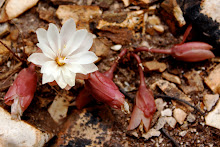
Mel Bartholomew is the author of Square Foot Gardening and is a famous gardening guru. In the first edition of his book, he outlines everything you need to know to be a successful gardener - and then goes one step further by profiling a variety of commonly-grown vegetables (including basic information, fertilizing tips, how to start seeds, etc). It's impossible for one book to be all-inclusive but Mel's book is a great place to start because it goes over all the basics thoroughly.
The theory of square foot gardening seems pretty common-sensical, but if you notice, a lot of gardeners/farmers grow their vegetables in rows. Row cropping has its benefits but in smaller spaces, square footing rules. The idea is that each vegetable can be grown in increments of square feet (one tomato per one square foot, sixteen beets per square foot) - so you maximize your crop for your space. Then, when one vegetable is harvested, something else can go in the square. The gardens that Erin and I are planning contain approximately 70 square feet or so. There's at least 50 sqft in the gardens that will be up against the house and I'm estimating another 15-25 against the fence where we want to plant our corn. One day I'll upload my sketches so you have a better idea of where we're planting.

Along with Mel's book I've been doing extensive reading in another gem called Carrots Love Tomatoes by Louise Riotte. This book goes over vegetables, herbs, cover crops, trees, natural pest controls, and more. One of the main issues this book covers (and my favorite thing about it) is companion planting, which is the act of planting certain species together that benefit each other. For example, basil enhances the flavor of tomatoes and helps protect them from insects - so these two can be planted together. Flowers can be good companions too - corn and sunflowers may be planted together as a 1970 study showed that when sunflowers were interplanted with corn, corn yields were higher than fields planted with only corn.
For some reason I get really excited about companion planting. Diversity in the garden is important and using plants that benefit each other just seems like the most natural way to enhance your productivity. Also, there are certain flowers like nasturtiums, coreopsis, and marigolds that act as natural insect-repellents for your garden. While they are obviously not as effective as some chemical weapon, they are a natural aide and add color and texture to the veggie plot.
There are also some exciting combinations that reduce how much space you use. For example, even though we have a troublesome growing climate, we're going to try growing corn. Beans may be planted amongst the corn and allowed to grow up the stalks. The corn helps to protect the beans from searing mid-day sun, and beans help restore the nitrogen to the soil that the corn eats up. However, pole beans do not do well near sunflowers - so will I plant the corn with sunflowers or with the beans? It becomes an exciting puzzle (and experiment).

No comments:
Post a Comment